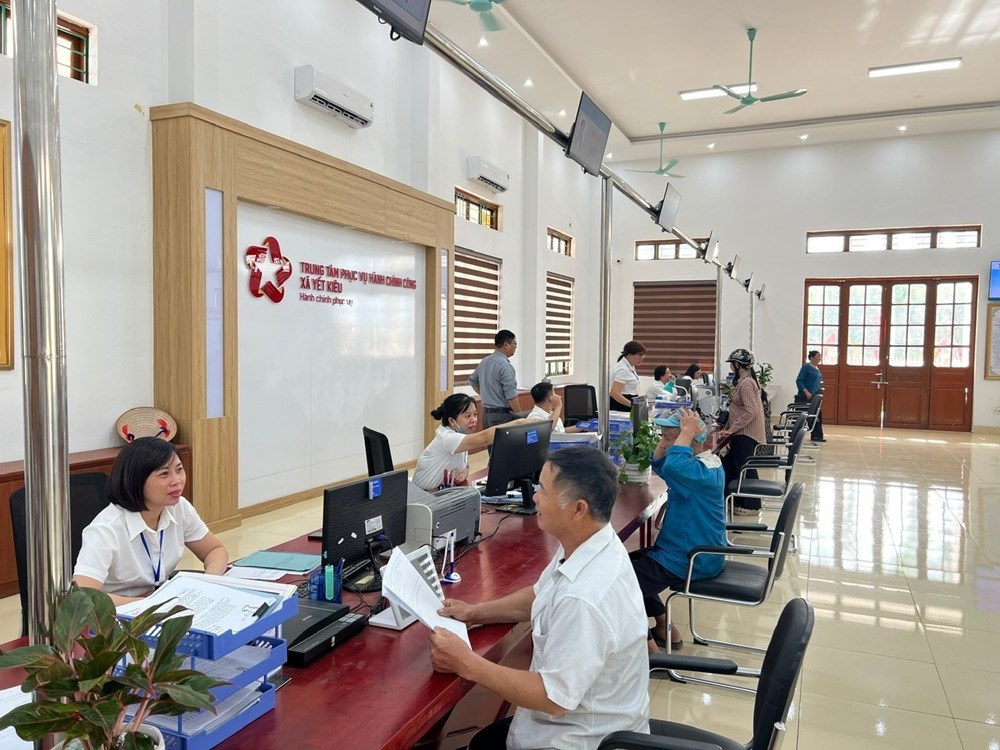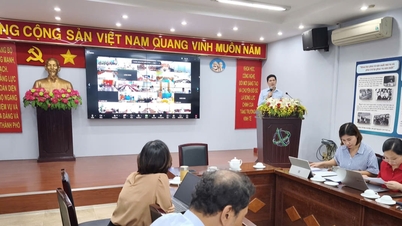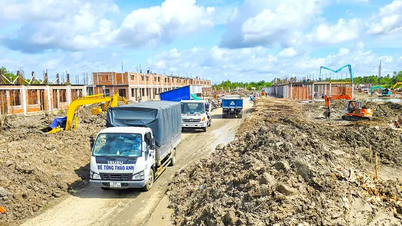
If national data is likened to the "central nervous system" of the administrative apparatus, then local authorities are the "operational hubs", ensuring that information is circulated, processed and returned to serve the people.
Operating platform of local digital government
Building e-government at the local level is not just about equipping technological infrastructure, but also about restructuring the entire governance model. Each locality must reorganize its record-keeping process, operating process, decision-making methods and coordination mechanisms between government levels in a unified, transparent and data-driven manner.
An effective e-government must be operated on four basic platforms: Data connectivity, infrastructure synchronization, process standardization and human capacity development. Data connectivity is a prerequisite. When all levels and sectors work together on a unified platform, administrative data will no longer be "blocked", helping to make decisions faster, reduce duplication and increase transparency. Connecting with the National Document Interconnection Axis and the National Public Service Portal is the fundamental step to move from fragmented administrative management to a smart management system based on open data.
In parallel, infrastructure synchronization is a factor that ensures the system's continuity. Connecting 100% of communes and wards to a dedicated data transmission network, equipping a document management system and online meetings is a mandatory requirement if one wants to build a "real-time operating" apparatus. Synchronized infrastructure helps local authorities not only implement instructions faster, but also monitor, evaluate and respond promptly to arising issues. Standardizing administrative processes is also an important factor. When people only have to declare information once and state agencies are responsible for sharing and reusing data, the administrative apparatus will truly shift from "record management" to "data management". Standardizing processes not only helps shorten processing time, but also creates consistency between levels of government, a key factor of e-Government.
Finally, people are the central element of all reforms. Officials and civil servants are the ones who directly use, operate and spread technology to the people. Therefore, along with infrastructure investment, each locality needs to focus on training digital skills, data mining skills and service culture. It is the team of commune and ward officials, the people closest to the people, who are the "connecting circuit" that helps digital transformation become real. When these four pillars are established synchronously, local authorities will have the capacity to act quickly, be transparent in management and proactive in service, creating a solid foundation for the national e-Government.
However, reality shows that the journey is not easy. Many localities still encounter "bottlenecks" in human resources, infrastructure and data connection. Commune-level officials still lack technological skills; facilities are not synchronized; software systems sometimes operate unstable, causing interruptions in the process of processing records. In particular, the connection between the administrative document management system and the administrative procedure settlement system in many places is not complete, forcing officials to operate on two platforms at the same time, causing overlap, wasting time and reducing efficiency. In addition, the connection with national databases on population, justice, land, etc. is still not really stable.
In recent years, many localities have moved from the mindset of "digitalizing processes" to "governance by data". From simplifying records and applying electronic one-stop software, they have now moved towards synchronous management through data sharing platforms. More than 80% of provinces and cities have built local data centers and integrated information sharing platforms (LGSP) connected to the National Public Service Portal. This is an important step forward, because only when data is connected and standardized can the government make quick, accurate and transparent decisions.
To overcome this, a more comprehensive approach is needed: Building e-government cannot be separated from improving the data capacity of public officials. Training in digital skills, understanding of cybersecurity and data analysis capabilities must be considered as criteria for assessing administrative capacity. At the same time, localities need to encourage public-private partnership models, mobilizing technology enterprises to participate in developing data infrastructure, cloud services, information security and operational monitoring solutions.
Another fundamental element is the culture of data. When data sharing becomes an obligation, transparency becomes a principle, and information protection becomes a discipline, people’s trust in the government is strengthened. This creates a new governance model: a government based on data and monitored by data, where every action of public agencies leaves a digital trace, and every decision has a clear quantitative basis.

Lesson 1: Foundation for Digital Government
Towards a smart local administration
If the Central Government is the one who creates the institutional framework, the locality is the one who “breathes life” into the e-Government through concrete actions. The local government is the core of the digital transformation process. The success of the e-Government is not only created at the ministerial and sectoral levels, where the institutions and data platforms are shaped, but is also verified at the commune and ward levels, where people directly feel the changes in each administrative transaction.
Practice over the past years has shown that many localities have been making steady progress in the process of building e-government, each with its own approach, but with the common goal of modernizing governance, making operations transparent and serving the people better.
Ninh Binh is one of the provinces that has completed infrastructure and synchronized data early. Up to now, 100% of communes and wards in the province have been connected to high-speed Internet and specialized data transmission networks; all 129/129 communes and wards are equipped with online video conferencing systems, ensuring smooth operations from the central to the grassroots levels. Document management and administration software is used uniformly, 100% of users have stable access, sending and receiving documents on the national axis. The issuance of electronic identification codes, official digital signatures, and deployment of shared software has reached 100%, creating conditions for cadres, civil servants, and public employees to use the systems synchronously, without interruption in processing work. Ninh Binh is a typical model for the "infrastructure-based, data-centered" approach in the initial construction phase of e-government.
Da Nang is a city that has been at the top of the national digital transformation rankings for many consecutive years, and is the first locality to issue a specialized resolution on digital transformation by 2030. 100% of administrative records are processed electronically, more than 50% of public services are processed throughout, many times higher than the national average. Da Nang's Smart City Operations Center (IOC) integrates hundreds of data sources, from traffic, security to education and health, helping city leaders make decisions in real time. The online feedback mechanism allows people to submit recommendations, monitor the processing, and turn data into a tool to increase accountability.
Meanwhile, Quang Ninh is a locality that clearly demonstrates the model of "digital transformation in parallel with institutional reform". The province's smart operation center integrates data from 14 fields, allowing leaders to make decisions based on synthetic analysis. The province has simultaneously deployed electronic school records, electronic health records, and cashless payments, achieving an online record rate of over 80% and a people's satisfaction rate of over 90%. In particular, Quang Ninh includes digital capacity criteria in annual staff evaluations, linking digital transformation results with public service emulation, and turning technology into a part of organizational culture.
From these models, it can be seen that local government is the “laboratory” of e-Government, where policies are tested, technology is operated, and social trust is formed. When data is connected, processes are standardized, and people become the center, local government is not only performing administrative tasks, but is also creating the foundation for a smarter, more honest, and more people-friendly administration.
(To be continued)
Source: https://baovanhoa.vn/nhip-song-so/chinh-quyen-dia-phuong-la-dau-moi-van-hanh-178206.html




![[Photo] Lam Dong: Images of damage after a suspected lake burst in Tuy Phong](https://vphoto.vietnam.vn/thumb/1200x675/vietnam/resource/IMAGE/2025/11/02/1762078736805_8e7f5424f473782d2162-5118-jpg.webp)


![[Photo] President Luong Cuong receives US Secretary of War Pete Hegseth](https://vphoto.vietnam.vn/thumb/1200x675/vietnam/resource/IMAGE/2025/11/02/1762089839868_ndo_br_1-jpg.webp)




































































































Comment (0)